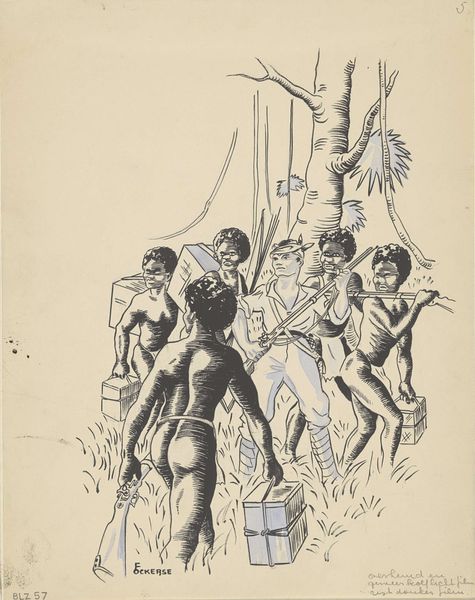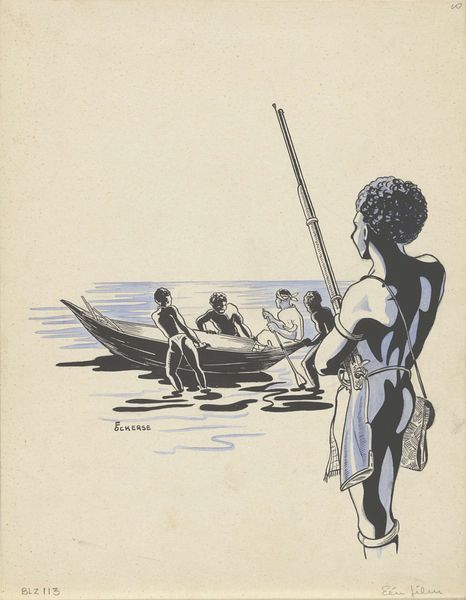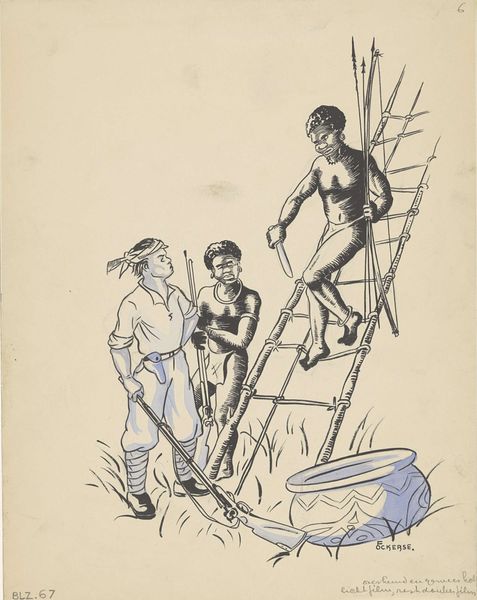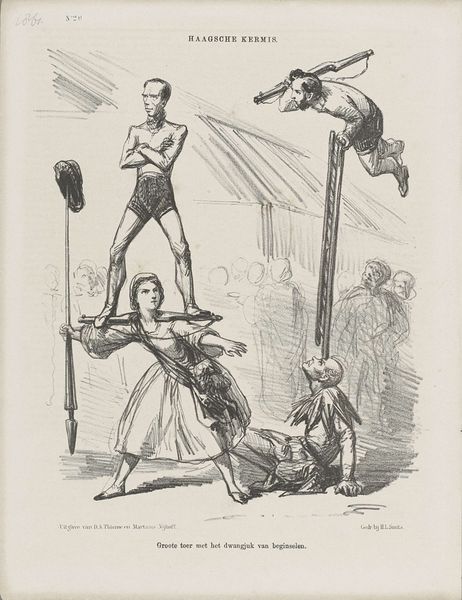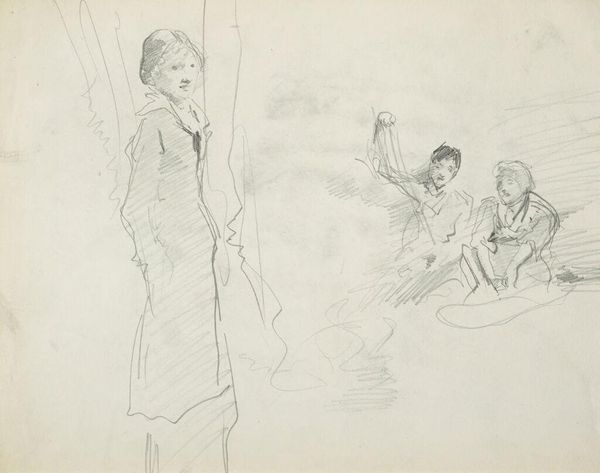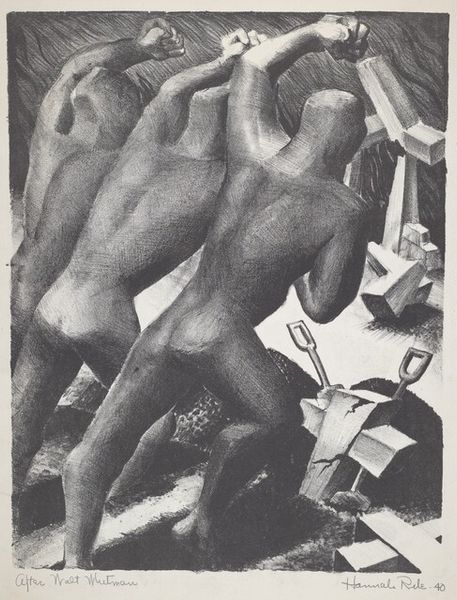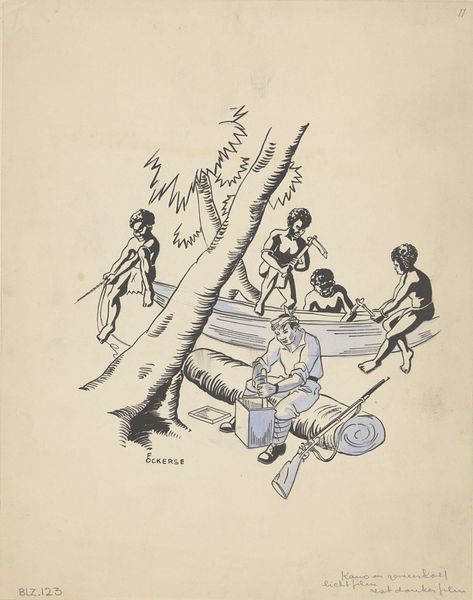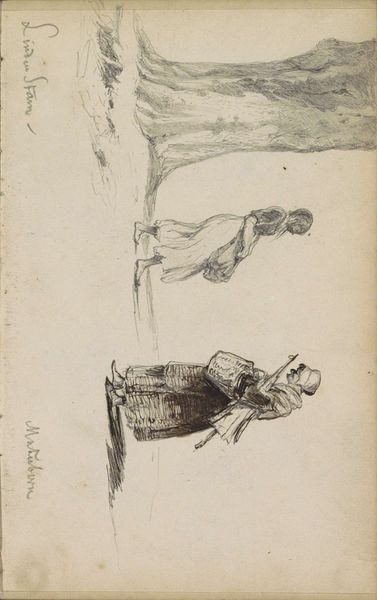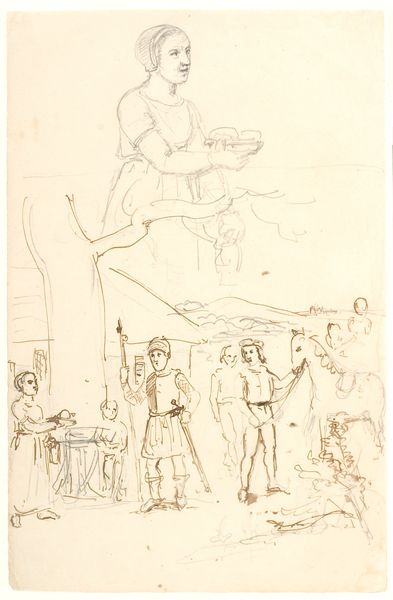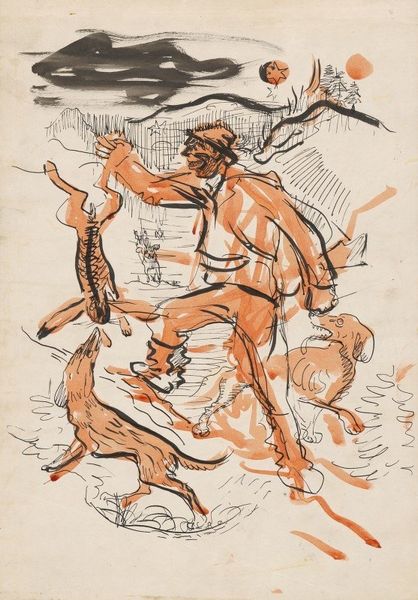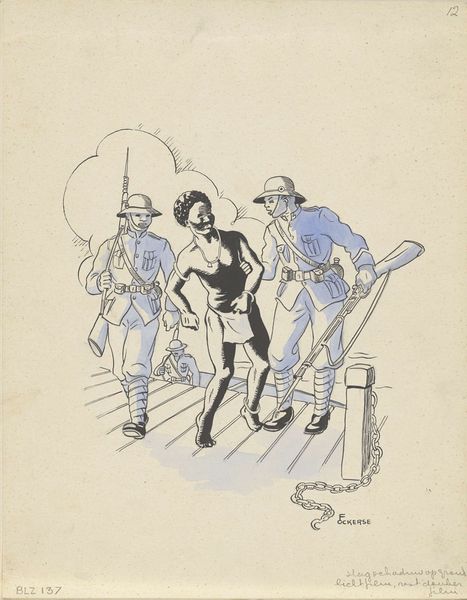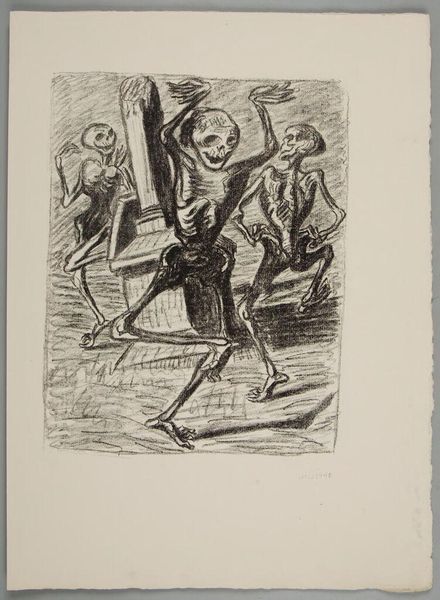
drawing, paper, ink, pen
#
drawing
#
imaginative character sketch
#
light pencil work
#
pencil sketch
#
landscape
#
cartoon sketch
#
figuration
#
paper
#
personal sketchbook
#
ink
#
idea generation sketch
#
ink drawing experimentation
#
pen-ink sketch
#
sketchbook drawing
#
pen
#
sketchbook art
Dimensions: height 279 mm, width 218 mm
Copyright: Rijks Museum: Open Domain
Curator: At first glance, there's something both innocent and imposing about this work. Editor: Indeed. What we have here is "Nieuw-Guineese jagers," or "New Guinean Hunters," a piece attributed to F. Ockerse and created before 1936. It appears to be executed in pen, ink, and pencil on paper. Curator: The interplay between the pen work and the pencil really does lend a sketchy, almost journalistic feel. You can practically feel the hand of the artist moving across the page, deciding what details to commit to ink and what to leave more ambiguous. I am very intrigued by Ockerse’s materials. I'm keen to examine what sort of pencils and pens he would have used. The material constraints would reveal much. Editor: I'm drawn to the implied narrative and what it reflects about European perceptions of indigenous peoples. The composition guides our eye: one hunter looks out into the landscape with what I imagine is intense concentration, but he is also placed to have his back to us, a framing decision which I read as the Western-gaze on Indigenous populations. There is such tension within the relationship between the West and non-Western cultures. Curator: I think that tension stems also from how Ockerse chose to render textures: compare the detail work done to delineate the skin tones and muscles against the broad, flat brushstrokes he uses to create the sky and grass. We also have the contrast between the detail done to portray the wooden weapon—maybe even a self-fashioned firearm—and the other spears, which seem very rushed by comparison. The artist's hand and its varying intensity speak volumes! Editor: I find myself contemplating its role within a larger colonial discourse and its impact on shaping public understanding. Perhaps Ockerse viewed himself as objective. Curator: Whether consciously or not, he made material choices that offer a commentary. These men are actively crafted onto paper with specific processes. The sketch wasn't made of "thin air," but came to existence only because of specific pencils, ink, and labor—I suppose these form what Barthes would consider the *studium* of the work. Editor: It serves as a reminder that these representations are never neutral; they carry the weight of historical context. Curator: Indeed. Examining such sketches reminds us how art itself becomes a raw material in constructing larger social narratives. Editor: Absolutely. I'm grateful for a deeper engagement with "New Guinean Hunters," thinking about the weight of socio-political perspectives.
Comments
No comments
Be the first to comment and join the conversation on the ultimate creative platform.
